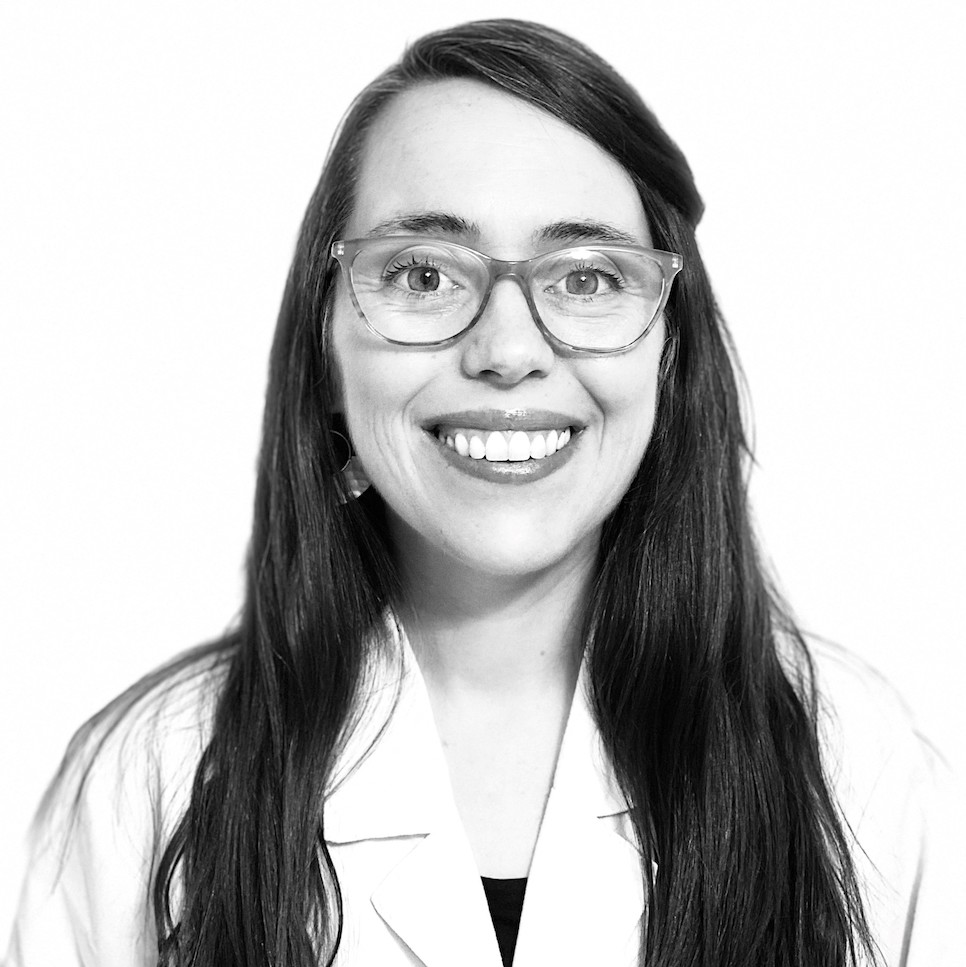COVID-19 Survey for Workers aimed to understand how workers and their families have been affected by COVID-19 pandemic at home and on the job.
We are grateful to share stories of some of the people that we met during the course of the project.
 Alison Young
Alison Young
Nurse-Midwife at Planned Parenthood, member of the California Nurse-Midwives Association
Why did you decide to become a nurse-midwife?
I was studying maternal and child morbidity and mortality during undergrad in a program called Community Studies at UC Santa Cruz. I did a deep dive in the literature and many research articles were written by midwives on the problems with maternity care in our country and the dramatic racial disparities for Black and Indigenous mothers and babies. The more I read about Indigenous and Black infant and maternal mortality, the more evidence I found that racial disparities are caused by systemic racism and not biology, social class or education.
Midwives advocate for increasing access to care as well as comprehensive care that addresses the whole person and whole community. I view midwifery as a tool for social change and have always desired to serve historically medically underserved people, as this is who midwives have always cared for.
I have worked as a doula, provided comprehensive maternity care, done deliveries inside and outside of the hospital and now work in the clinic setting. I am fully aware of my place as a white midwife serving black and brown people and aim to work using an anti-racist and reproductive justice lens. My goal is to empower my clients and reduce racism in my practice, in my workplace and in my community in hopes of reducing health disparities and empowering all people I serve.
Before the pandemic, what was a typical day like at work? What did you like best about your job? Looking back, what do you miss most?
The work I do today is not so different than the work I did pre-pandemic. How I do my job may have changed a little but the work I do is the same. I see around two to four patients an hour and that has not changed a lot, however I am doing more tele-health appointments by phone or video.
There have been constant policy changes to improve work conditions as evidence presents itself to reduce risk for patients and health center staff. My favorite part of my job is connecting with patients and providing a safe space for them to share their concerns about their health. I can still do that during a pandemic but I might be doing that over the phone or with a mask on, sitting 6 feet away from patients.
I think I have had to work a little harder to express empathy to patients, given my face is covered, but you can really show a lot of emotion with your eyes and I have developed other forms of body language to create a safe space. I try to sit at eye level with patients and make strong eye contact and I use my hands a lot to describe a procedure.
I do miss seeing patients’ faces and allowing their children and family members in the room.
Are you afraid to go to work?
I am not afraid to go to work. I think I am safer at work than let’s say, the grocery store. All staff and patients are masked and our policies are strong to protect everyone in the clinic. Staff is screened daily for symptoms, exposures, and their temperature is taken before their shift starts. Patients are required to be masked and if they do not have a mask, one is provided. Patients are also screened by phone for symptoms before they ever enter the health center.
Patients have been very respectful and understanding of constant policy change and we as staff have become used to the constant updates. I feel like my organization has a challenging job of balancing the safety of staff and providing access to the most underserved of our community. I think they have done an amazing job and I am proud to come to work each day.
“The issues we face as health care providers usually have more to do with social problems and barriers to access to health care due to the failures of local and federal government to support people during crisis.”
What are the big challenges you and other nurse-midwives face with this pandemic?
I can’t speak for all nurse-midwives because I am working in a reproductive health clinic and 90 percent of nurse-midwives are working in hospitals, but I would say that I do find it even more challenging than usual to provide comprehensive care during this pandemic. The issues we face as healthcare providers usually have more to do with social problems and barriers to access to health care due to the failures of local and federal government to support people during crisis.
I check in with every single person I serve about how their home life is, and overwhelmingly people are struggling financially and emotionally, as many have lost their jobs, or can’t work because they have to be home with their kids as school is virtual. The pandemic has hit working families the hardest, where parents are expected to not only work if we can but also facilitate home learning for our children and the pressure and stress of those expectations can negatively affect one’s health.
It is much harder to prevent pregnancy, or remember to take medication, or remember to get STI testing when you have to care for your entire family all day every day. If there is a medical emergency, many patients are apprehensive to seek emergency care for fear of contracting COVID. Many patients face transportation issues or have to make decisions about whether to pay for health care services or groceries, and many parents put their health last on the priority list.
Was the impact COVID-19 had on your work a surprise?
I think I was anticipating that social problems would be exacerbated, but I was not expecting that to be the main impact of the pandemic. I was expecting the stress faced by patients to be directly related to the virus: fear of contracting the virus or fear of protecting their families, however the main stressors I hear from my patients are the increase in financial concerns and domestic tension due to isolation and stress.
How has the pandemic changed pregnancy and childbirth for women?
Many of my patients are fearful of becoming pregnant or continuing a pregnancy during the pandemic. Most patients cite the pandemic as the reason they are seeking abortion due to fears of contracting the virus or giving birth in the hospital alone without their partner or support person. For patients who continue pregnancy they ask me, what will happen if I give my baby the virus?
What’s something people don’t understand about your work right now?
Most people don’t understand how crucial accessible reproductive health care is. Many of my patients have no insurance and no other access to health care besides the reproductive services we provide through state funding.
The reason that we provide reproductive care is because we recognize it is critical to preserving the life that our patients want and deserve, whether that be to prevent getting pregnant or preserving the ability to get pregnant, to be free of infection and to feel empowered about their health. This is what our patients ask for, so this is what we provide.
Has the government helped or hurt workers like you during the pandemic?
The federal government – the lack of public health structure, whether that be the initial lack of encouraging mask wearing, to the delay in testing, to the lack of support for labs to complete testing in a timely manner, to the lack of tracing positive cases combined with the lack of social safety-nets has been devastating for many, particularly those already struggling. In addition, the politicizing of the virus has divided communities and created distrust in public health.
All of these things combined have led to the unnecessary death of thousands of people. The worst part is that people of color are dying at a much higher rate, highlighting the systemic racism in our country.
If there was one thing you could change in your workplace to make pregnancy and childbirth safer for women and workers during COVID, what would it be?
I think my patients are safer in the health center where I work than outside of the health center. We work very hard in the health center to create a safe environment, but I can’t say that for where my patients work or live.
Patients have expressed concerns about safety at their jobs, whether that be working at a drug store, the ER or as a sex worker. The lack of a strong public health message that is supported by the White House in combination with the historical suspicion of science and the “don’t tread on me” ideology makes many think the virus is not serious or won’t affect them.
It’s really hard to expect people to follow public health guidance if your political leaders don’t promote science.
In California we’re experiencing two major catastrophes at the same time: climate change and the pandemic. How have these crises coming together affected your work and the women you see?
Where I work in rural Northern California, fire season causes significant fear and stress for patients and staff. Evacuations have become the new normal and for those with unstable housing this fear is even more significant.
Many patients and staff report stress and disruption to normal daily life during fire season. This disruption to daily life can cause patients to forget to take birth control and can lead to unintended pregnancies, for example. Just like the pandemic, the general disruption to life caused by excessive fire due to climate change exacerbates social problems which negatively affect heath.
What concerns you most about the future?
I worry about the increasing inequality in our country and the inevitable devastation that climate change will have on all aspects of life. Economic inequality, lack of investment in public education, a housing crisis, a broken health care system and repeated natural disasters caused by global warming are all a result of bad policy that at the end of the day affects marginalized people in our society most. The pandemic has only made things harder.
As a clinician who cares for those facing the brunt of poor policy, I worry for my patients that their lives will get harder. I do have hope because I often work on reproductive health legislation and I see those dedicated to improving policy. I am also amazed by some of my younger patients and colleagues who are passionate about social change and combating systemic racism. The more we talk about inequality, commit to anti-racism self-practice and fight for progressive policies, the better my patients’ health will be and the better our country will become.
Has anything positive come from the pandemic?
Although people of color are disproportionately affected by the virus in a negative way, everyone has been affected in some way. This communal trauma we are all going through can bridge differences and create a sense of connection.
 Jennifer Biddle conducted this interview in September 2020. Biddle is a science writer and video producer working in digital media. Her film Waking Up to Wildfires recently was nominated for an Emmy.
Jennifer Biddle conducted this interview in September 2020. Biddle is a science writer and video producer working in digital media. Her film Waking Up to Wildfires recently was nominated for an Emmy.
